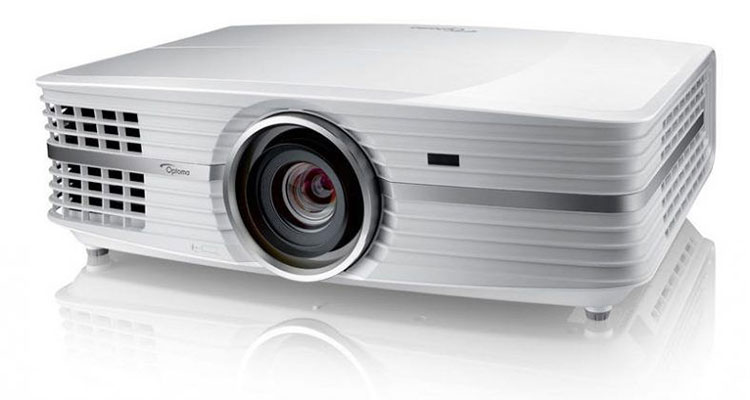Optoma Disrupts 4K UHD Home Projector Market – How Will Other Manufacturers React?

By Darren Taylor
Futuresource Consulting
For the past few years, 4K projection has been the reserve of digital cinema, high-end Pro AV and premium home cinema applications, primarily due to high cost of the light engines. However, key component supplier Texas Instruments (producing around half of the world’s front projector light engines) demonstrated a lower-cost 4K UHD DLP chip at CEDIA 2015. This new chip was be suited for B2B and consumer applications up to around 5,000 lumens brightness; such versatility offered significant economies of scale. DLP-powered vendors such as Acer, BenQ released home cinema projectors at the end of 2016, powered by these 4K UHD chips. While these projectors were competitively priced against 75”+ 4K televisions, with a lower “dollar per inch” cost, the ~$6,000 price tag for these projectors presented a significant investment for a prospective buyer. However, it was anticipated by Futuresource that this price would decline to a more affordable price point in the short-medium term and this was realised earlier in the week when Optoma confirmed the price of its latest 4K home cinema offerings. The HDR-ready UHD60 and UHD65 models, priced at $1,999 and $2,499 respectively, are the least expensive 4K UHD projectors to date, undercutting other DLP-powered 4K solutions as well as those using Sony’s SXRD chip and even 4K pixel shift alternatives from Epson and JVC.
It had been expected that more lower-cost 4K solutions will enter the market, already evidenced with Acer having showcased a less expensive 4K solution at ISE 2017. Though pricing has yet to be confirmed, it is expected that this solution will be priced competitively against Optoma’s offering. While there is still a considerable pricing delta between 1080p and 4K, the latter resolution will almost certainly gain a pronounced increase in sales volume. Though bill-of-material costs for projectors are closely-guarded secrets in the industry, Futuresource believes that the greatest contributing factor in this decline in price was a reduced cost of the DLP chip, motivated by a wish to increase 4K sales figures more rapidly.
As observed with the lower-cost 1080p offerings witnessed since 2014, more affordable 4K solutions from Optoma and Acer will likely be extremely disruptive in not only the home cinema projector market but the projector market as a whole with 4K having the potential to preserve market value in both B2B and consumer applications as unit sales are on the decline. With 75”+ 4K UHD TVs retailing at more than $6,000, the sub-$3,000 models available from Optoma give a more favourable “dollar per inch” ratio, giving potential to attract interest from home cinema enthusiasts seeking a large screen display in the home, particularly when their budget is limited or the logistics of installing a large-format TV are difficult. However, TVs are still expected to clearly remain the most dominant home display worldwide.
While naysayers may dismiss projectors using TI’s 4K UHD DLP chip, claiming they are not “true 4K” due there being half as many micromirrors as specified by 4K UHD resolution (i.e., 3840×2160), each mirror can produce two distinct pixels, thus the chip can meet the native pixel count of 4K UHD. Furthermore, according to Projector Central, the 4K UHD DLP chip can be scientifically measured on a par with existing 4K chips (with one pixel per mirror/reflective element). Over the upcoming months, it will be interesting to see the reactions of competitors in the market, not only from the perspective of projector vendors but also from component suppliers, namely responses from manufacturers of LCD and LCoS chips.
This blog was used with the permission of Future-Source Consulting and originally appeared here.



